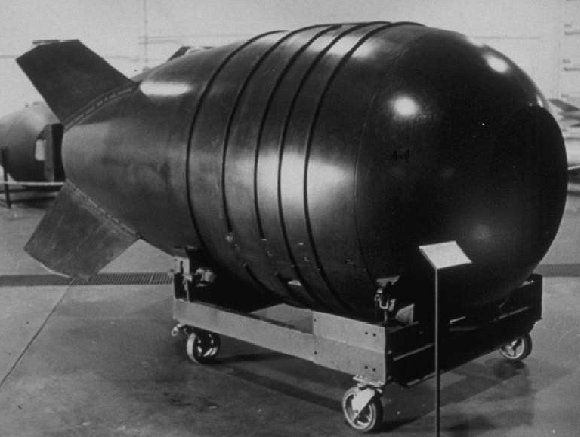The Nuclear Arms Race
During the Cold War, the two main superpowers - America and the USSR - raced against each other to stockpile nuclear weapons and develop more destructive weapons. This was called the ‘Nuclear Arms Race’.
In 1952, America detonated the first Hydrogen bomb. Though smaller than the A-bomb which in 1945 was dropped on Hiroshima with such devastating effects, the H-Bomb was actually 2,500 times more powerful. Just one year later and the Russians had produced an H-bomb of its own.
Bombs were just the tip of the iceberg though; any new military technology that provide the upperhand in the Cold War was eagerly sought after. For example, America created the B 52, which was type of a bomber plane that could fly 6,000 miles and drop a nuclear warhead. However, such developments required huge financial investment, which is where the USA’s greater budget gave it the advantage over its Soviet rivals, who instead maintained their focus on created bigger and bigger bombs.

While the US started to create weapons for the sky, Russia responded by going even more extreme; in October 1957, the Sputnik satellite was launched by the USSR. At the same time, the USSR was gaining an operational capability in Intercontinental Ballistic Missiles (ICMBs). This raised fears in America that the USSR was gaining technological supremacy so it decided to build the DEW line around the Arctic-Defence and Early Warning system. Much was at stake: American Intelligence estimated in the 1950s that 20 million Americans would be killed and a further 22 million injured in the event of a Soviet missile attack.
The ‘missile gap’ - the belief that Russia was producing more missiles of greater power than the US - became a live issue in American politics. The gap was in fact illusory, but it was used rhetorically by John F. Kennedy in his election campaign of 1960.
In the 1960s, Russia increased funding to enable more missiles to be built, albeit of a lesser quality. America, meanwhile, opted for quality over quantity; the country produced fewer missiles of a higher quality. For example, the Atlas missile was able to travel at speeds of 16,000mph for up to 5,000 miles.
But it was not just weaponry alone that was built - new weapons systems were also in developed. Among the systems created to enhance the two countries’ military muscle were mobile missile launchers that created the threat of a missile attack regardless of range. Nuclear submarines were also created; in 1960, the first Polaris submarine, which carried 16 nuclear missiles, was launched. However, as each missile contained four warheads that could be fired at different targets, one submarine effectively carried 64 nuclear warheads.
It was not just the US and USSR that were locked in the Cold War though; in 1967, China made a powerful demonstration of the threat it posed when the community country exploded an H-bomb, in turn sparking fears that NATO was outnumbered by forces to the East (see table). She placed her faith in nuclear missiles.
Troops: NATO 2.6 million. Warsaw Pact 4 million
Tanks: NATO 13,000. Warsaw Pact 42,500
Artillery: NATO 10,750. Warsaw Pact 31,5000
As more and more destructive weapons were stockpiled, the theory of Mutually Assured Destruction (MAD) developed. If one side launched a nuclear strike on the other, the other side would retaliate with nuclear weapons. A nuclear strike would therefore be suicidal. This probably prevented direct large-scale conflicts between the USSR and America during the Cold War.
Key facts and figures from 1981
- ICBMs: USA had 8,000; the USSR had 7,000
- Plane capable of the dropping a nuclear weapon: USA had 4,000; Russia had 5,000
- Defence spending: USA was $178 billion (by 1986 it had risen to $367 billion)
Things continued to escalate in the 1980s too and by 1986 it is estimated that there were 40,000 nuclear warheads in existence around the world. To put this in perspective, it was estimated by British Intelligence officers that if one average sized H-bomb were dropped on London it would flatten the city and destroy everything within a 30-mile radius.
Towards the end of the Cold War, the Nuclear Arms Race eased off. In December 1987 the Intermediate-Range Nuclear Forces Treaty (INF) was signed by the USSR and America. The full name of the treaty was: The Treaty Between the United States of America and the Union of Soviet Socialist Republics on the Elimination of Their Intermediate-Range and Shorter-Range Missiles. Both sides agreed to dispose of their conventional and nuclear ground-launched ballistic and cruise missiles with ranges of 500 to 5,500 kilometres.
MLA Citation/Reference
"The Nuclear Arms Race". HistoryLearning.com. 2025. Web.
